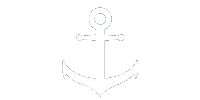Introduction
This, the seventh volume of the series, encompasses the closing months of 1776 and the first two of 1777. The Continental Army had been forced out of the New York area and was retreating through New Jersey. Henceforth New York and its harbor would be the main British base for naval operations off the coast and for the projection of military power by sea to other areas and up inland waters. The British could now take fuller advantage of the elements of mobility and surprise made possible by their naval superiority.
Being late fall and winter, the weather along the American coast was severe. Nevertheless, British warships kept blockading stations with marked vigilance off Delaware and Chesapeake Bays and important ports. Although many colonial merchantmen escaped through thcir net, others were taken into New York or Halifax as prizes of the enemy cruisers.
Late in November 1776 intelligence was received of embarkation of troops on British transports and shortly thereafter over 100 ships and some 7,000 men departed from New York, their destination unknown. Concerned over the possibility of Philadelphia being attacked from two sides, by the troops pursuing Washington from New York and by forces transported up the Delaware River, the Continental Congress moved to Baltimore. Washington's stunning victory at Trenton then eased the immediate British threat to Philadelphia.
The actual objective of the British amphibious force proved to be elsewhere. The expedition, meeting little resistance, occupied Newport on Rhode Island. They now had another base for their Navy and could prevent the flow of supplies in and out of Narragansett Bay. One of the consequences was the bottling up of the Continental Navy ships under Commodore Hopkins as his fleet retired up the Providence River.
Some Continental Navy vessels were, however, still operating at sea. John Paul Jones commanding the ship Alfred, in company with the sloop Providence, captured Mellish, a large supply- vessel carrying thousands of uniforms for the British Army in Canada. This timely prize cargo would instead warm Continental troops.
In the West Indies, Andrew Doria, Captain Isaiah Robinson, exchanged gun salutes with the Dutch fort on the island of St. Eustatius. This foreign recognition accorded the American Grand Union flag sparked strong diplomatic protests from Britain.
The scarcity of cannon and the difficulties of obtaining crews had been delaying the fitting out of additional Continental Navy ships. However, one powerful frigate, Randolph, finally put to sea under the command of Captain Nicholas Biddle.
By the end of 1776 American privateers were taking an increasingly heavy toll in their attacks on British commerce in the Western Atlantic and West Indies. Additional privateer commissions were being issued by the states and by the Congress. Use of French. and Spanish ports by American ships, a cause of deepening concern in official London, facilitated privateer operations in the Eastern Atlantic. The mounting count of captures made by "rebel pirates" moved the Admiralty to order expanded convoy protection and patrol duty.
Benjamin Franklin, distinguished scholar and diplomat, arrived in France to join Silas Deane as an American Commissioner. Franklin made his ocean passage in the Continental brig Reprisal, Captain Lambert Wickes. Reprisal would remain to cruise in European waters, and Lambert Wickes was destined to become a scourge to British shipping.
Through these and other naval and quasi-naval activities and actions on both sides of the Atlantic, sea power was exercising its pervasive influence on the Revolutionary War.
Documents selected for publication in Volume 7 include those from several depositories not previously represented in the series. This fact highlights the continuing and expanding support accorded the Naval Documents of the American Reuolution project through the years. Without such cooperation, coming from widely scattered areas and for which our gratitude is unlimited, this undertaking could not move forward. Unpublished Crown copyright-material in the Public Record Office, London, is reproduced by permission of Her Majesty's Stationery Office.
Among other publication assignments and responsibilities, preparation of Naval Documents volumes is centered in the Historical Research Branch of the Naval History Division. The editor's knowledgeable, experienced and dedicated colleagues in this Branch made indispensable contributions to manuscript and illustration collection efforts and to the finished product-Mr. Robert L. Scheina and his successor Miss Mary F. Loughlin, Mr. and Mrs. Henry J. Scheffenacker, Mr. Robert I. Campbell, Mr. E. Gordon Bowen-Hassell, Lieutenant (junior grade) David C. Russell relieved by Ensign Dorothy Apple, Mrs. Paulette Smith succeeded by Miss Joye Leonhart, Yeoman Third Class Mary K. Gagnon, and on Naval Reserve duty during the summer Master Chief Petty Officer George K. McCuistion. In the Naval History Division's Curator Branch, Mrs. Agnes Hoover gave her efficient and cheerful help with illustrations.
Maps and charts in this volume, as in those previously published, were collected by the Navy Department Librarian, Mr. W. Bart Greenwood, aided by Miss Mary Pickens of the Library staff. Under the guidance of Mr. Greenwood, the Naval History Division has compiled and published an American Revolution Atlas of contemporary 18th century maps and charts which complement the Naval Documents series.
Manuscript research and other invaluable assistance by two outstanding authorities in the field came from abroad-Commander W. E. May, R.N. (Ret) in London and Madame Ulane Bonnel in Paris. Foreign document review and excellent translations were provided by Commander Canio Di Cairano, USNR (Ret).
Lastly, but most certainly not least, the constant encouragement and sound advice offered by the distinguished members of the Secretary of the Navy's Advisory Committee on Naval History were, as always, welcome and deeply appreciated. A void has been left by the death of Marion V. Brewington, talented author, historian, museum director and long a valued member of the Advisory Committee. His deep knowledge of maritime affairs and wise counsel are missed.
Edwin B. Hooper
